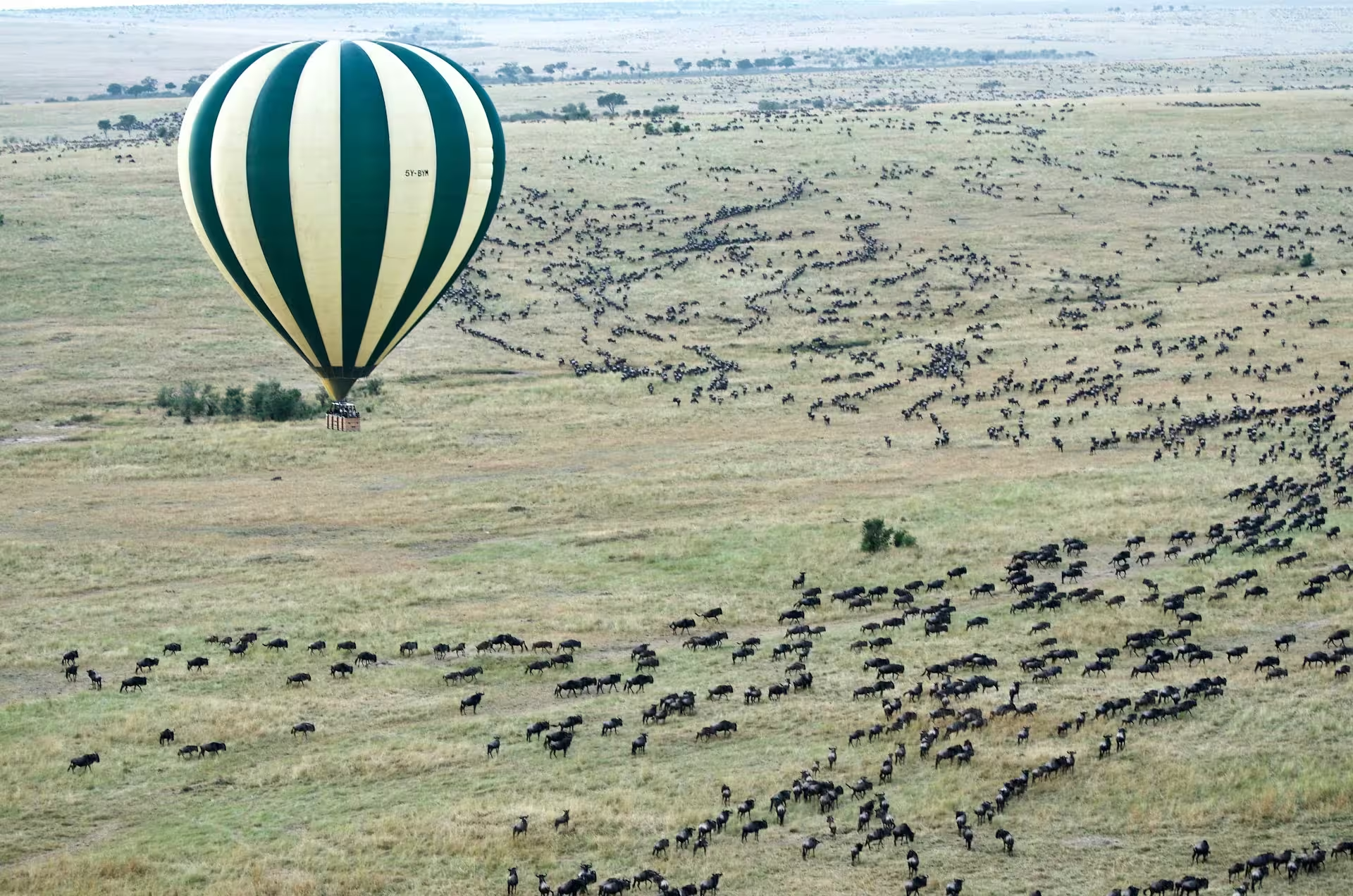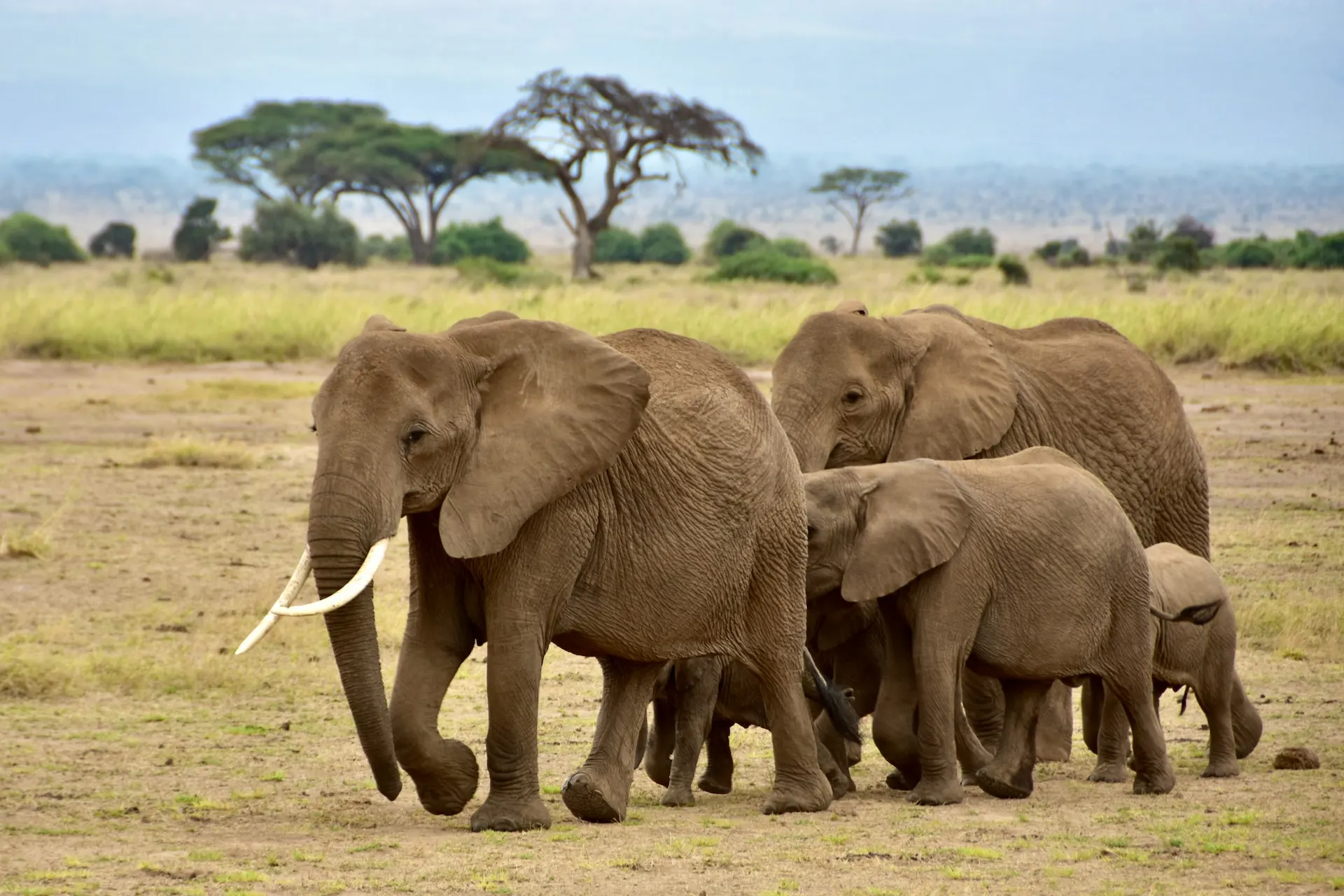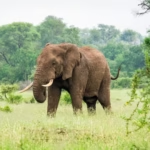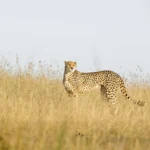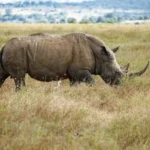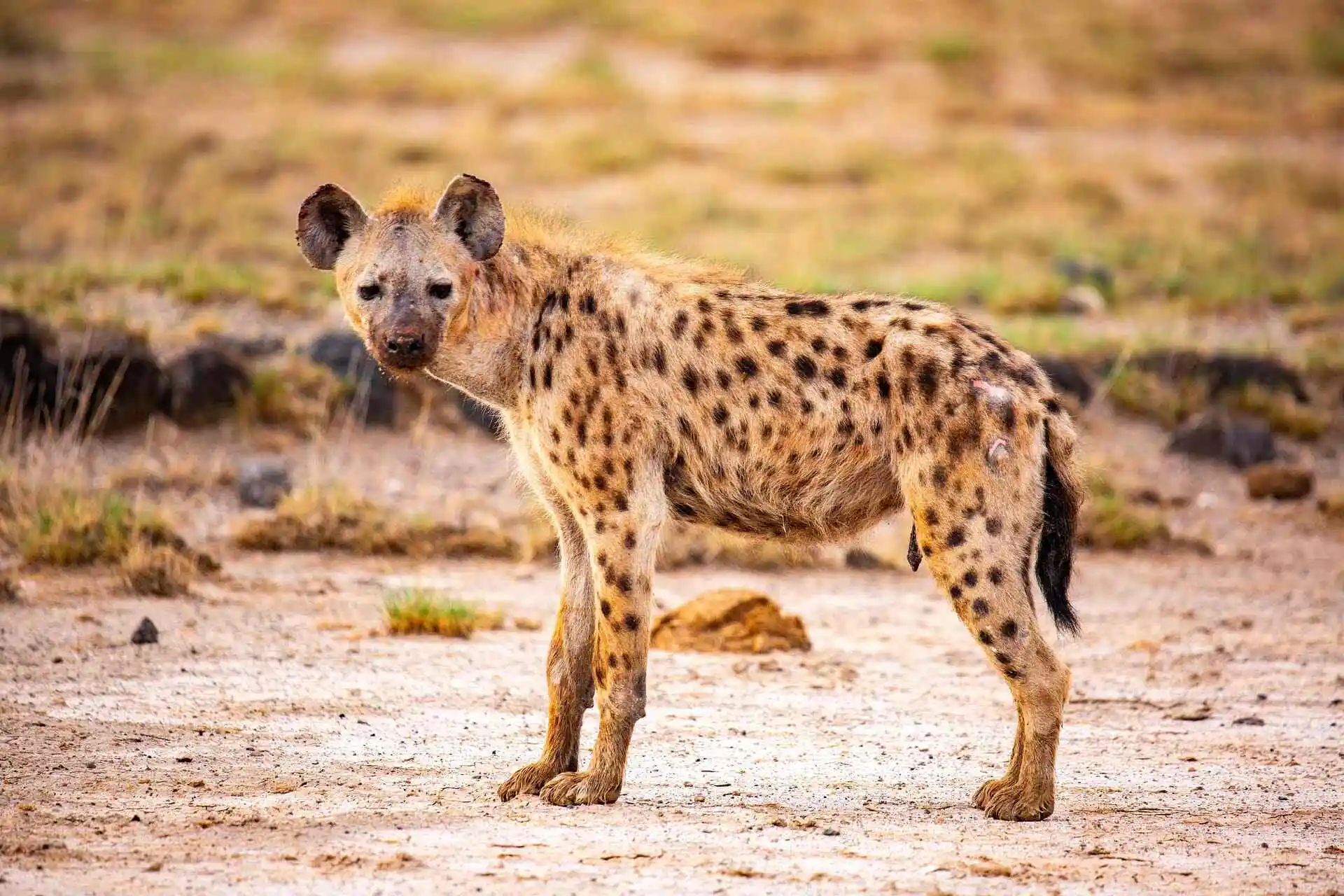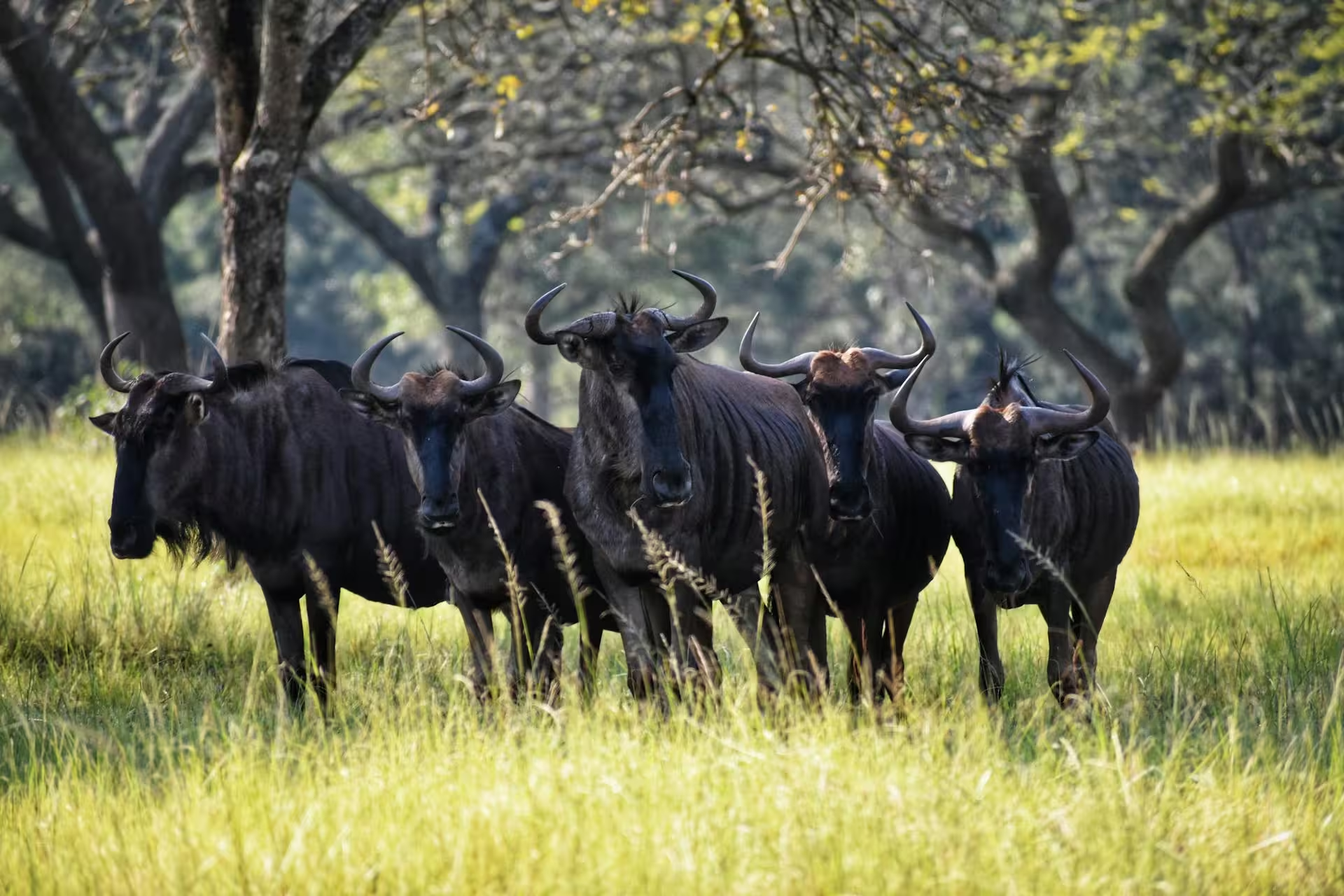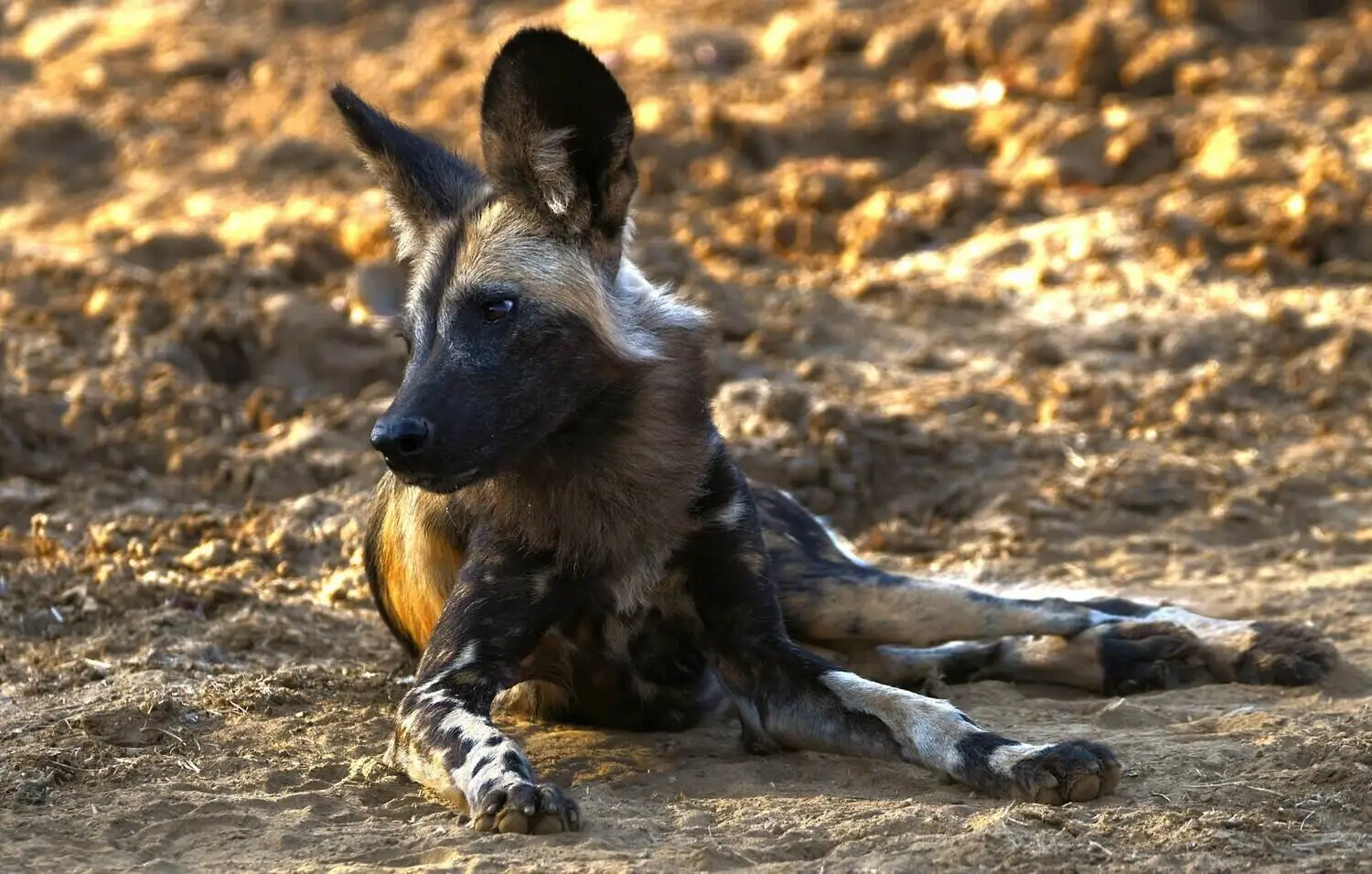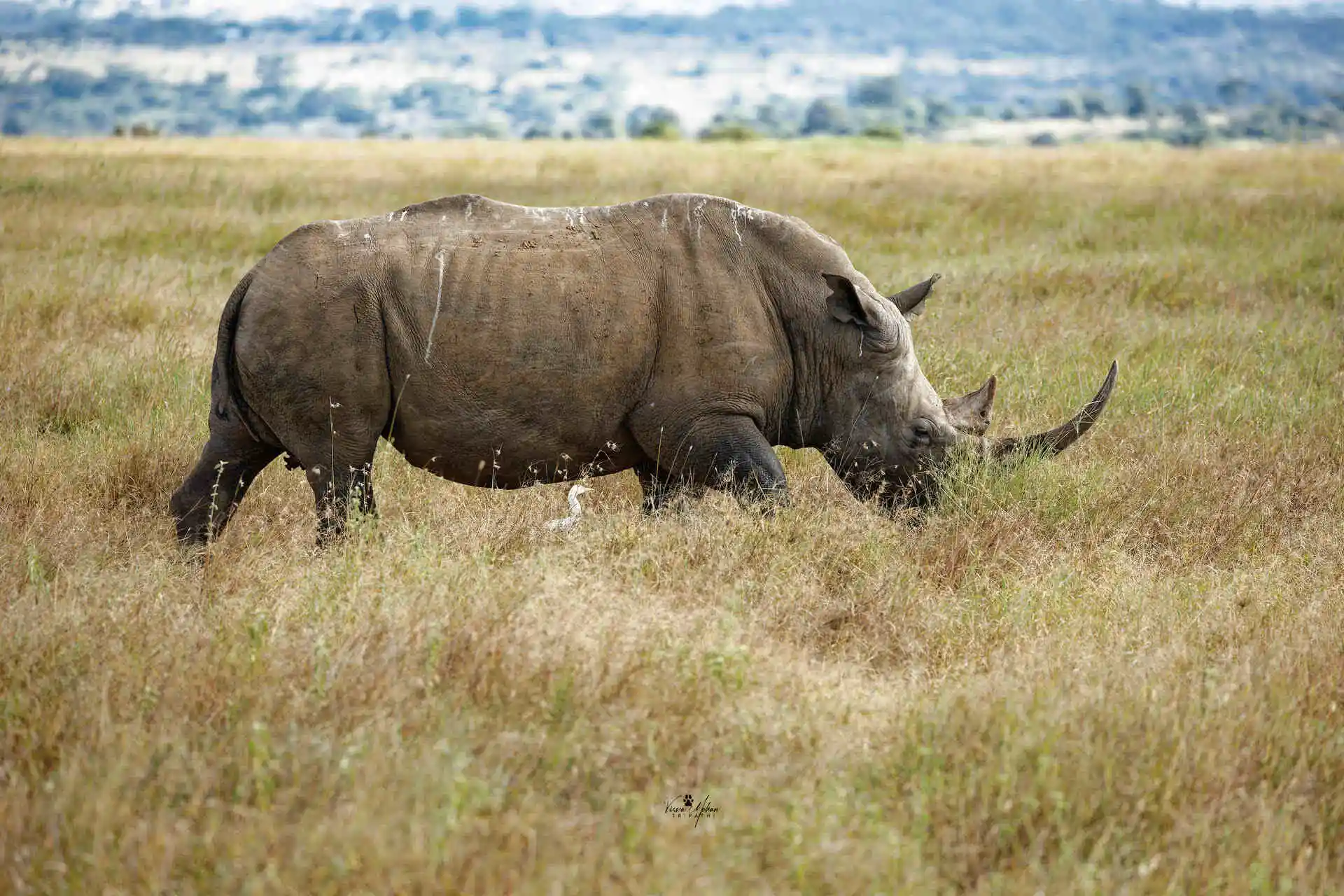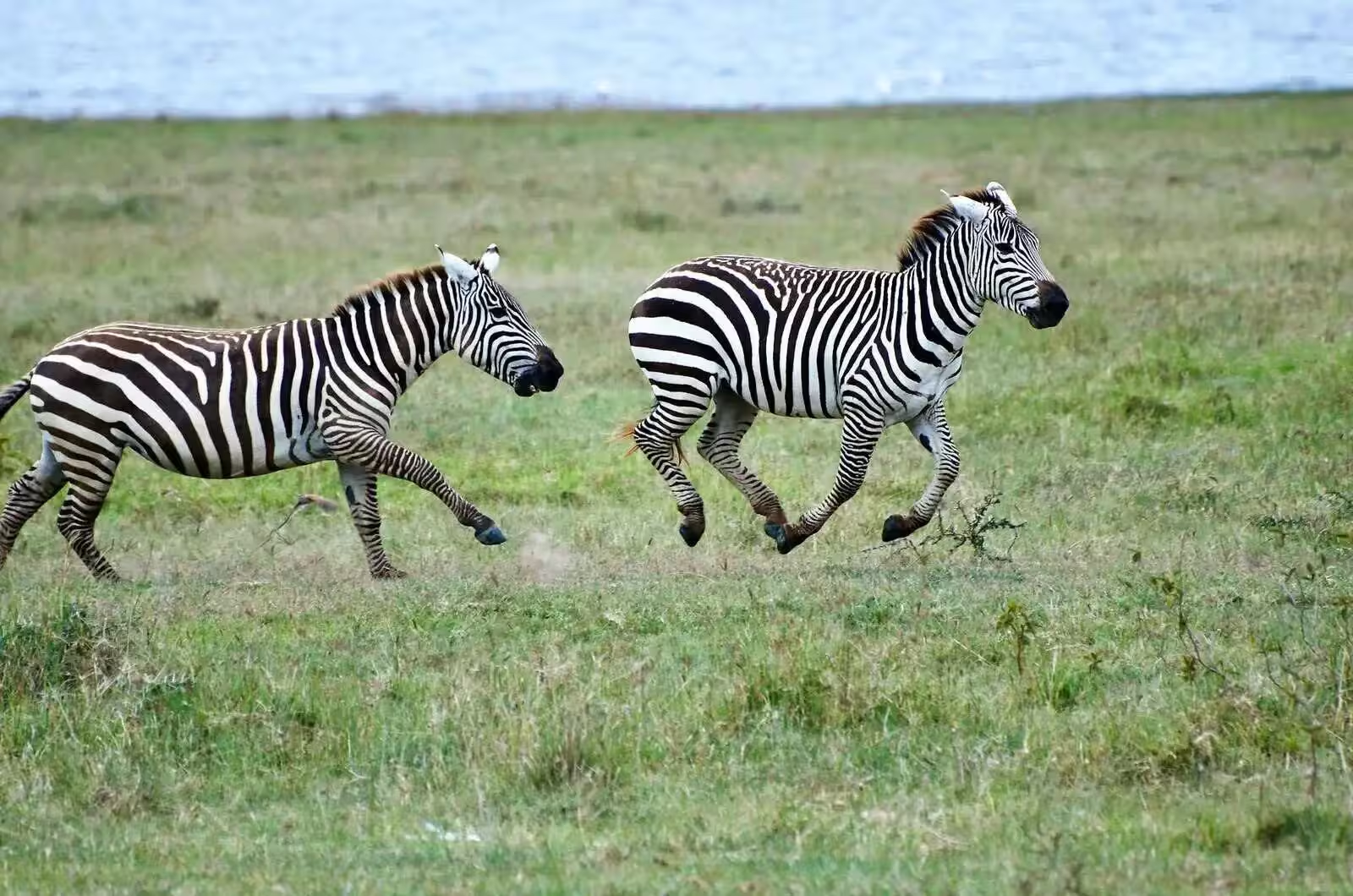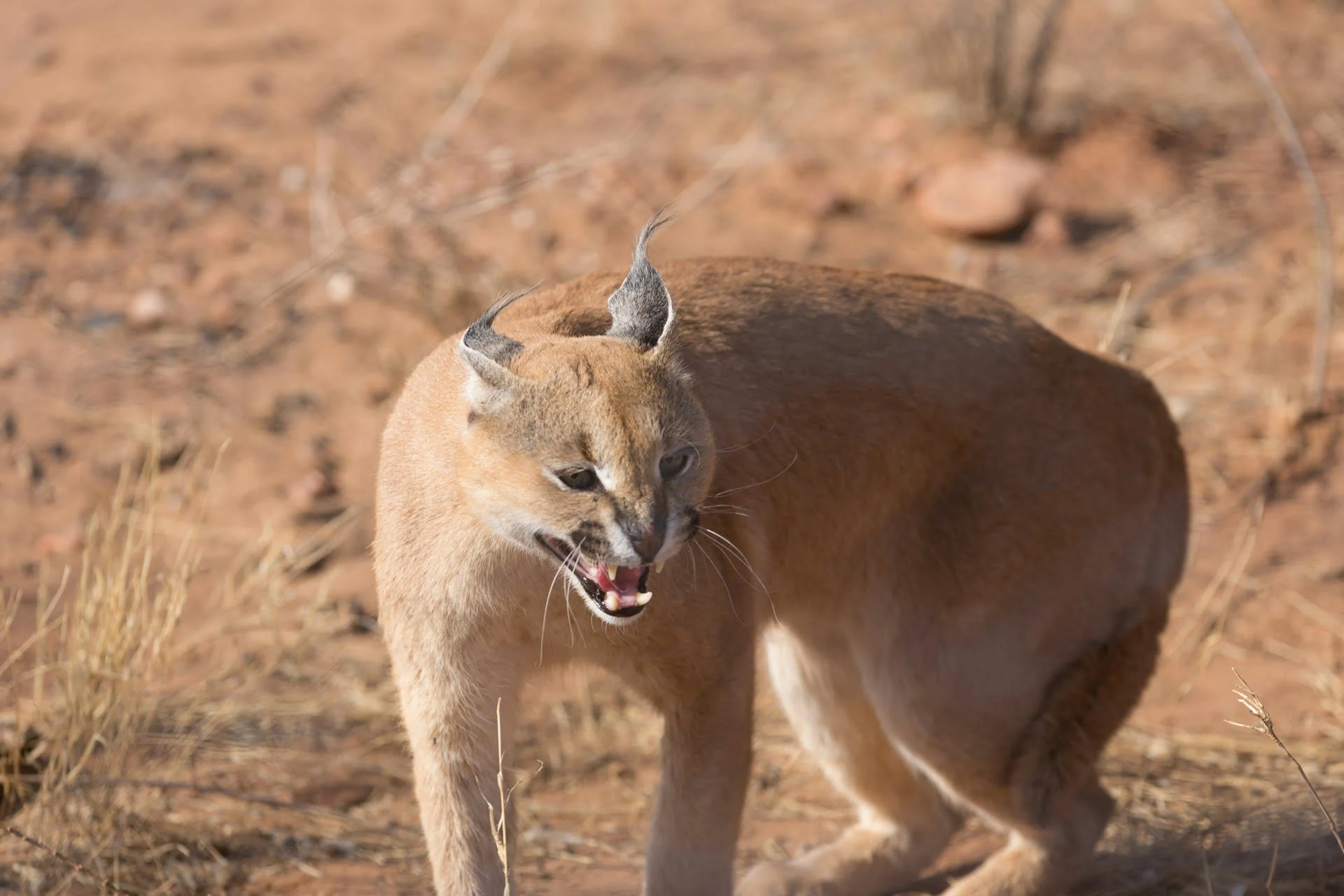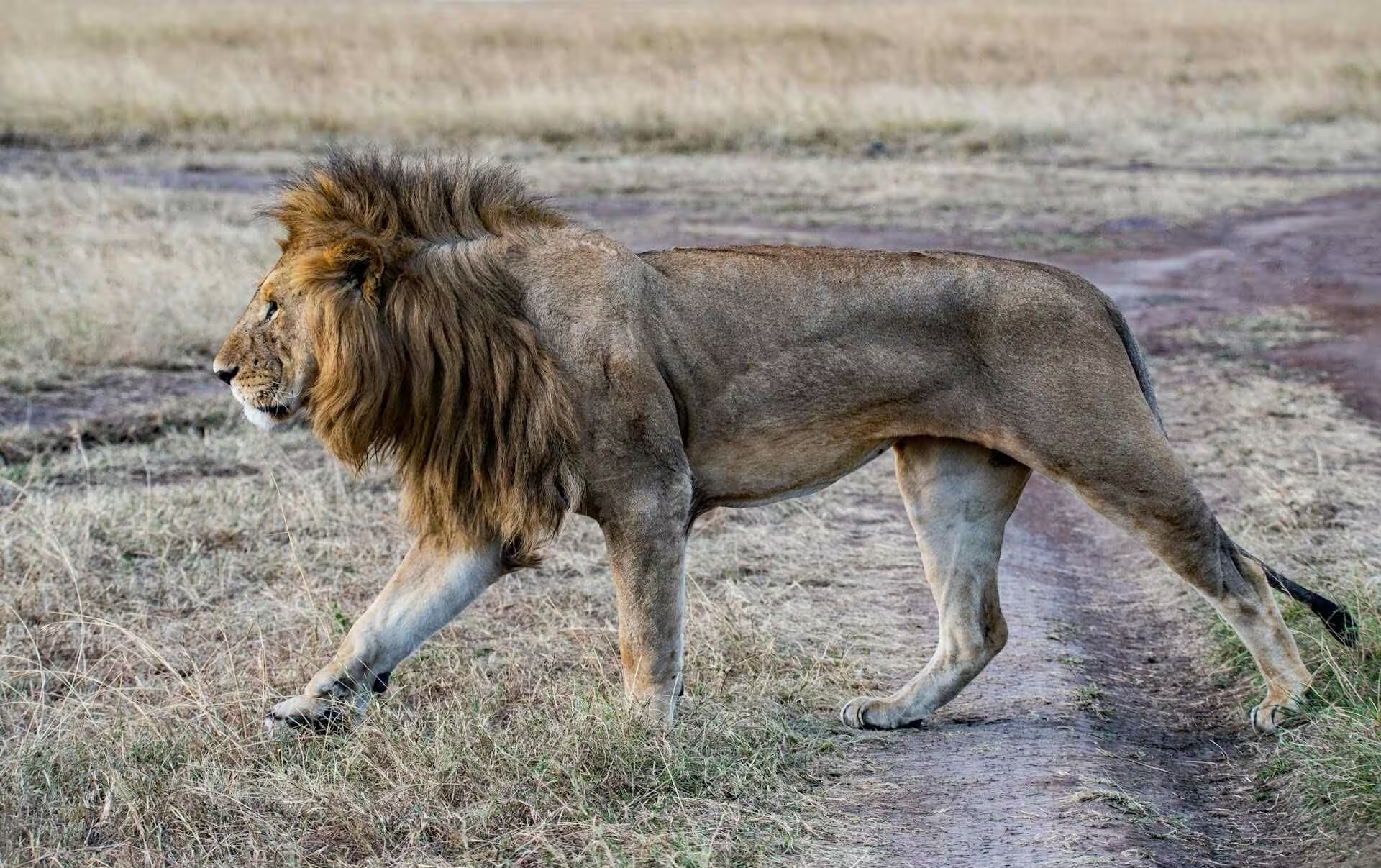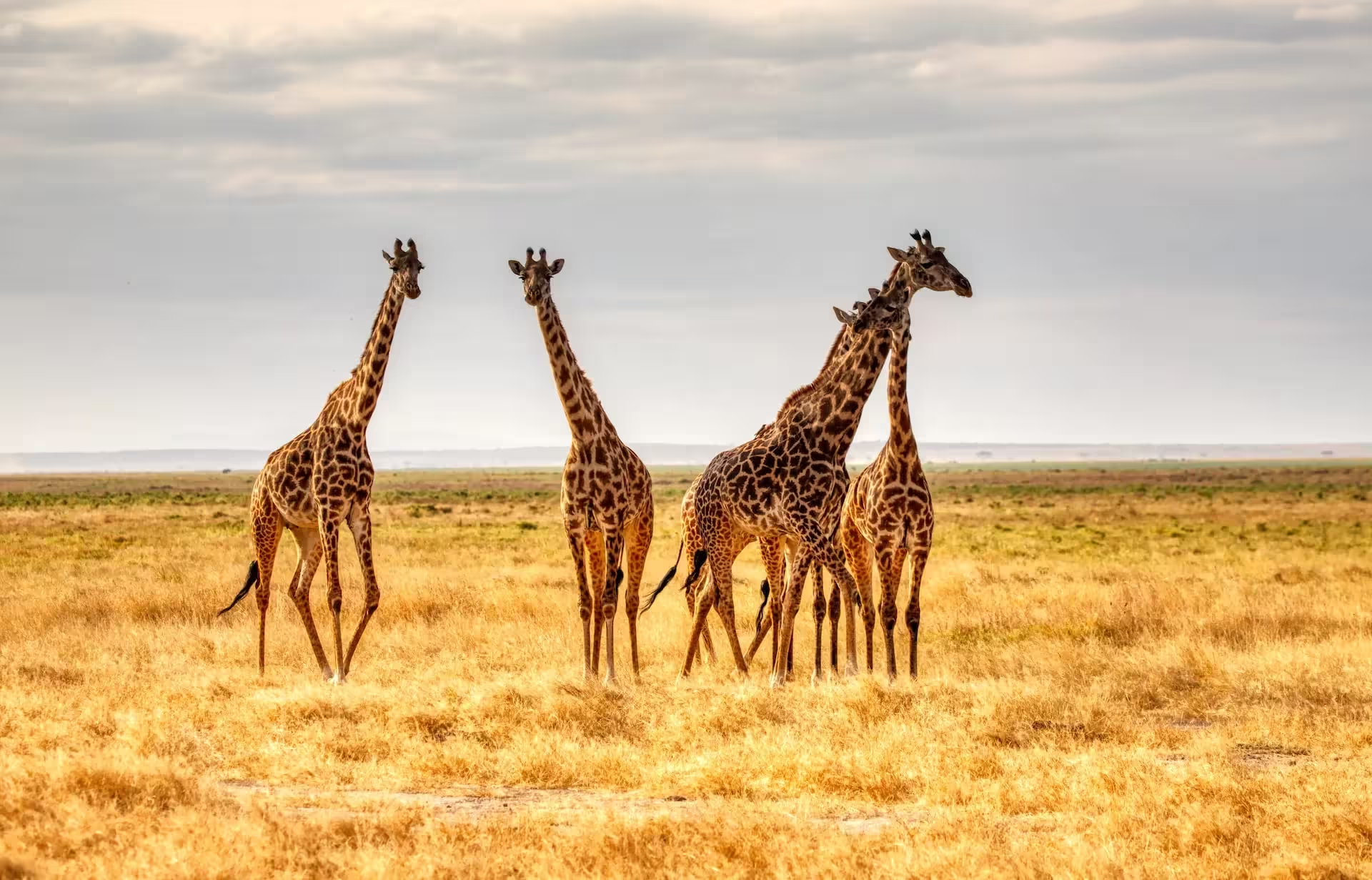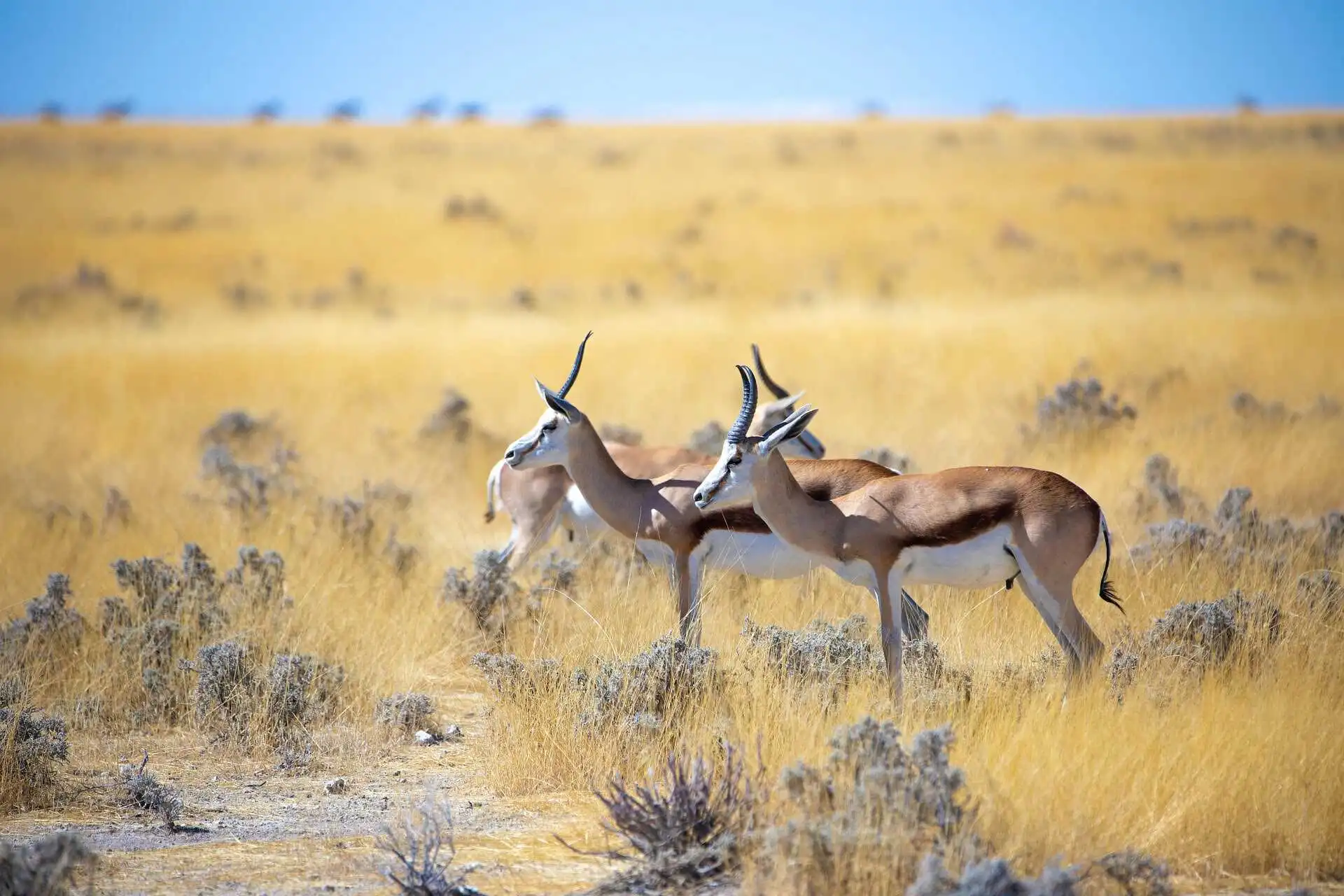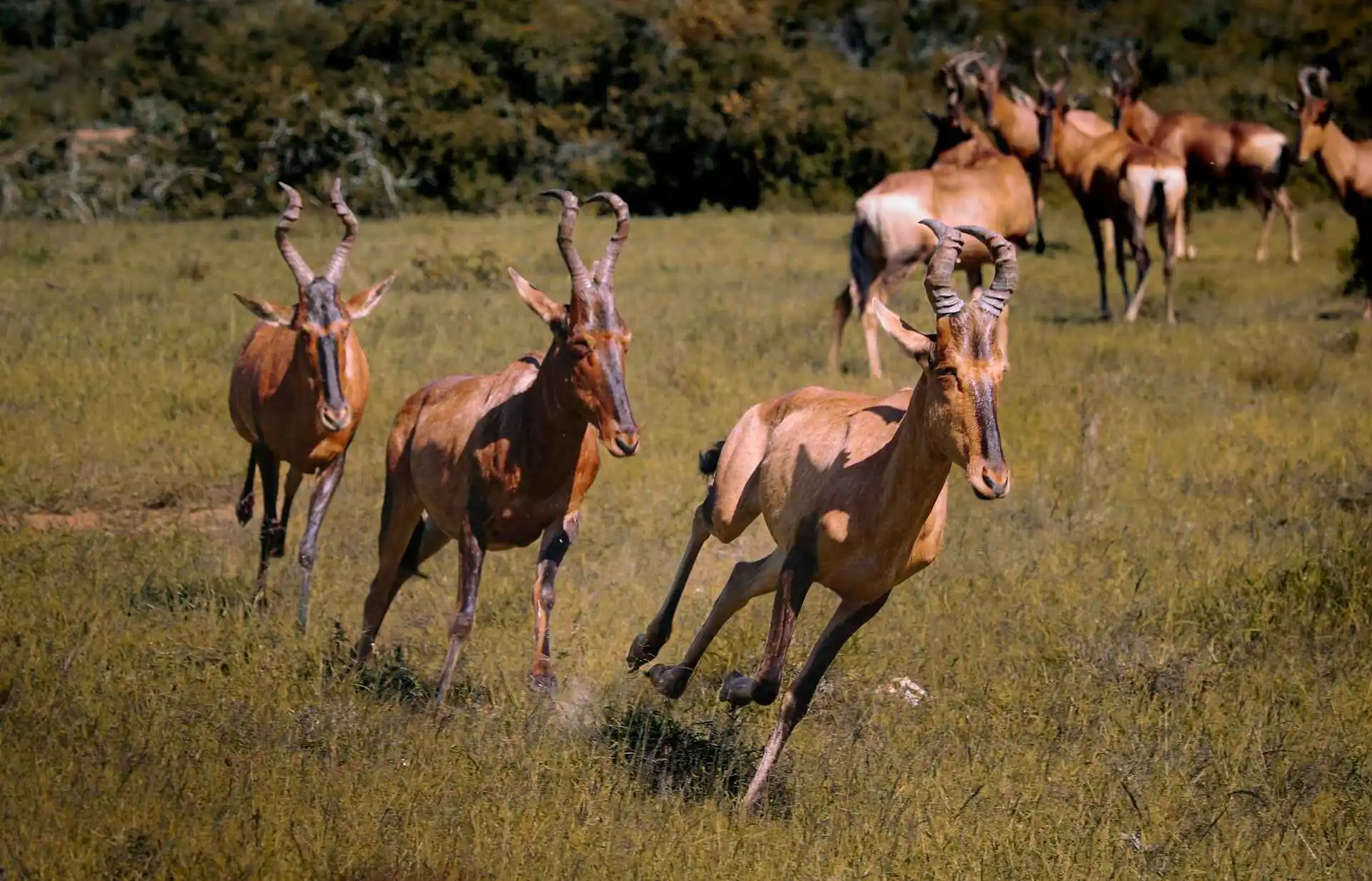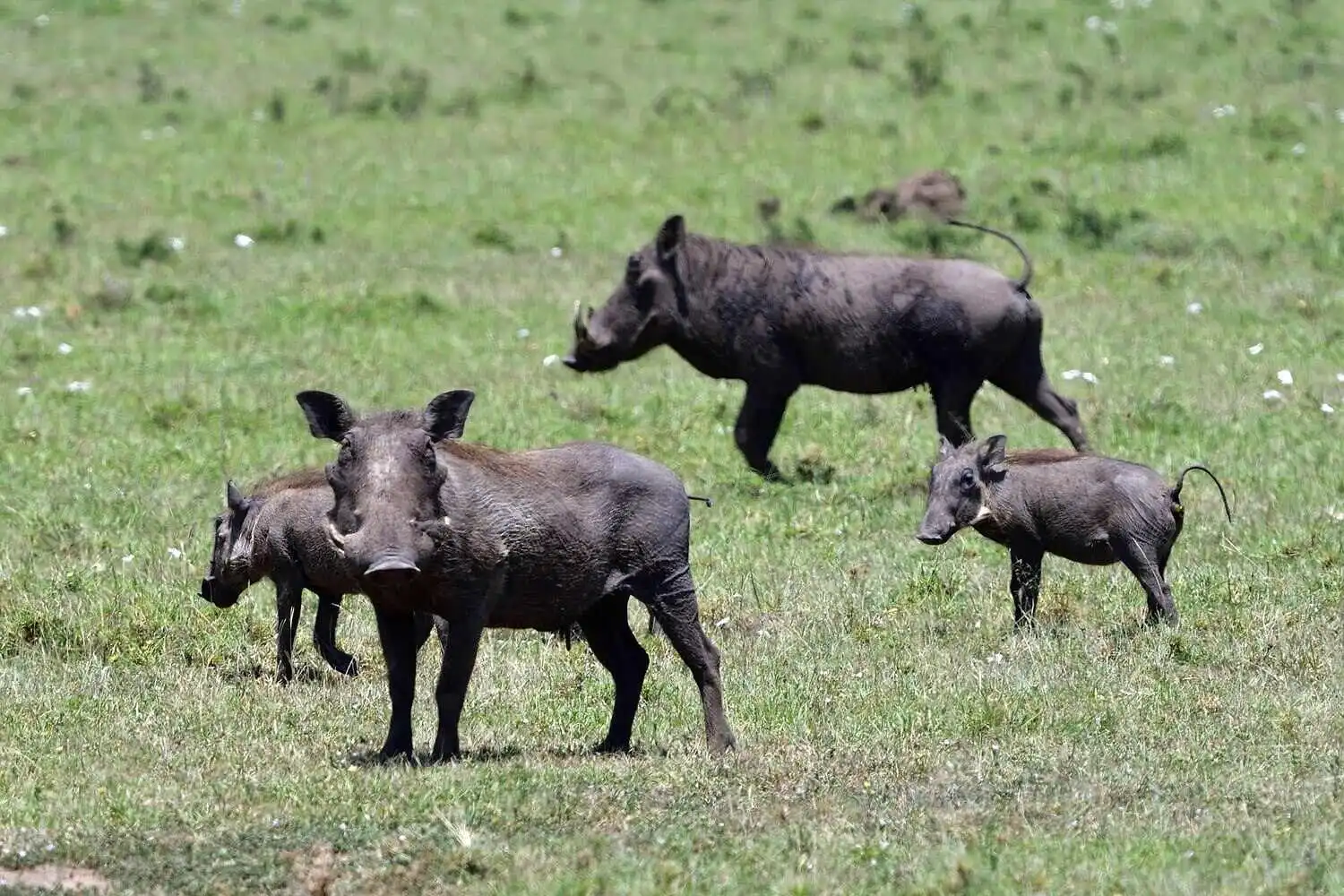What Does a Wildebeest Look Like?
The wildebeest, also called the gnu, is a tough, medium-sized antelope with a very distinct look. It has a sturdy build, a shaggy black mane, a long beard, and a broad, flat snout.
Both males and females have curved horns, which can grow up to 33 inches in length. Their overall appearance blends traits of a horse, buffalo, and antelope making them unmistakable on the African plains.
These animals are best known as the stars of The Great Migration, where over 1.5 million wildebeests travel across the Serengeti-Mara ecosystem in search of fresh grazing land. Their iconic Mara River crossings are dramatic scenes filled with danger and determination, often attracting predators like crocodiles and lions.
The wildebeest’s rugged build and migratory behaviour make it one of the most fascinating members of East Africa’s wildlife. Wildebeests can run up to 80 km/h while matching the speed of lions in short bursts.
Quick Characteristics Table
| Characteristics | Description |
|---|---|
| Scientific Name | Connochaetes taurinus (Blue Wildebeest) Connochaetes gnou (Black Wildebeest) |
| Common Name(s) | Wildebeest, Gnu |
| Conservation Status | Least Concern (IUCN Red List for both species) |
| Habitat | Savannas, grasslands, open woodlands, and bushlands in Eastern and Southern Africa |
| Diet | Herbivore; primarily grazes on short grasses. |
| Average Weight | Males: 150 - 250 kg (330 - 550 lbs) Females: 120 - 180 kg (265 - 395 lbs) |
| Shoulder Height | 1.2 - 1.5 meters (4 - 5 feet) |
| Lifespan | Wild: 15 - 20 years |
| Social Structure | Live in large herds. Males can be territorial or solitary. |
| Key Physical Traits | Heavy front quarters with a sloping back, large head, horns on both sexes, and a mane and beard. |
| Unique Behavior | Known for their large-scale annual migration in search of food and water. |
Types of Wildebeest
There are two main species of wildebeest in Africa:
Blue Wildebeest
Connochaetes taurinus
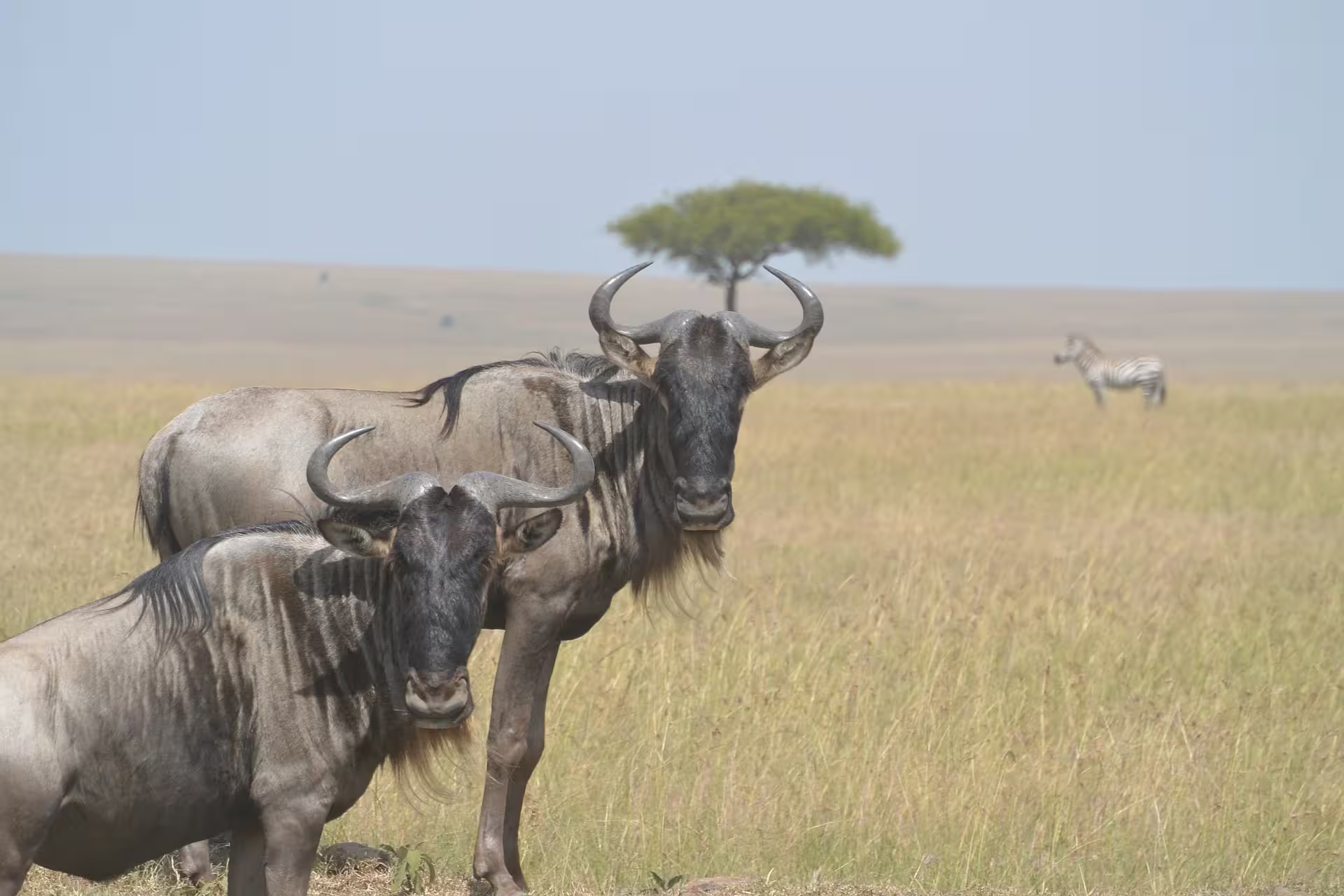
- Most common and widely recognized species
- Found in eastern and southern Africa, especially Tanzania, Kenya, Botswana, and Namibia
- Known for their blue-gray coat with dark vertical stripes and white beard
- Travel in massive herds, especially during the migration
- Also known as brindled gnu or white-bearded gnu
- Play a crucial role in seed dispersal and maintaining grasslands through grazing
Black Wildebeest
Connochaetes gnou
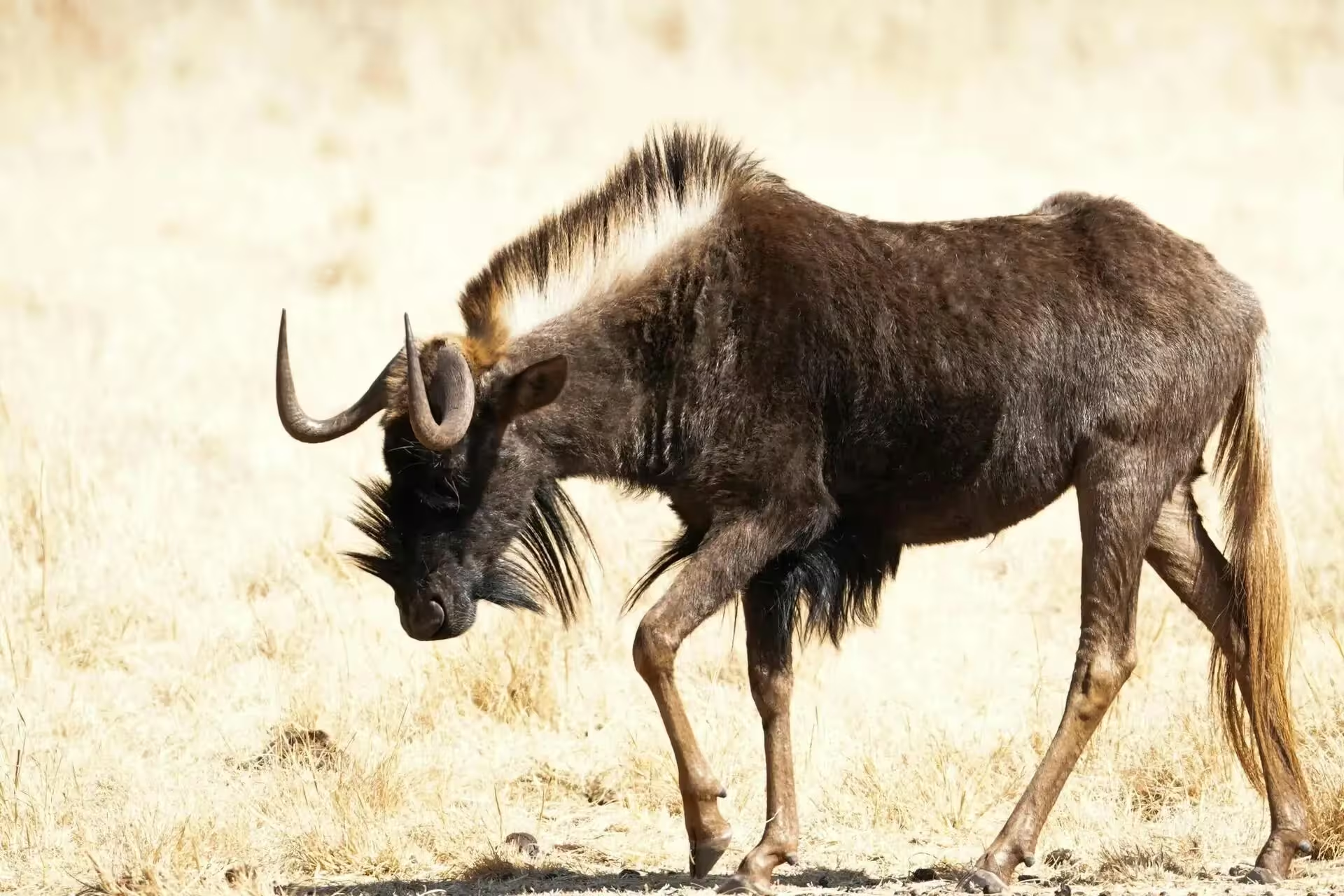
- Native to southern Africa, especially South Africa, Lesotho, and Eswatini
- Slightly smaller herds and less migratory than blue wildebeests
- Recognizable by their dark brown to black coat and distinct white tail
- Often called white-tailed gnu
- Less social and more territorial than their blue cousins
- Important for local ecosystems, helping with nutrient cycling and supporting predatorsa
What Do Wildebeests Eat?
Wildebeests are pure herbivores, mainly grazing on short grasses. They prefer open savannas and grasslands where they can find nutritious, tender shoots. During the rainy season, they feast on lush, green grass. In drier months, they adapt by consuming tougher, dry vegetation.
Their diet includes:
- Short grasses
- Shrubs and herbs during dry periods
- Occasionally fallen fruits or leaves when grass is scarce
Wildebeests are water-dependent grazers, so they often stay close to water sources. This dependency on water and grass shapes their migration patterns, as they constantly move to where fresh resources are available. Besides, a wildebeest can eat up to 5% of its body weight in grass each day.
The Great Migration
The Great Migration is one of nature’s most incredible journeys. It involves over 2 million animals, including wildebeests, zebras, and gazelles, as they move in a circular route across Tanzania’s Serengeti and Kenya’s Masai Mara.
This yearly event follows the rain and the fresh grass it brings. It starts in the southern Serengeti between January and March, where wildebeests give birth to around 500,000 calves in just a few weeks. As the land dries, the herds move northwest and north in search of greener pastures.
The most dramatic part of the journey is the Mara River crossing, usually around July to September. It’s a dangerous ordeal. Wildebeests plunge into fast-moving, crocodile-filled waters, often losing their footing or being picked off by predators.
This migration is the largest land mammal movement on Earth and covers over 1,800 miles each year.
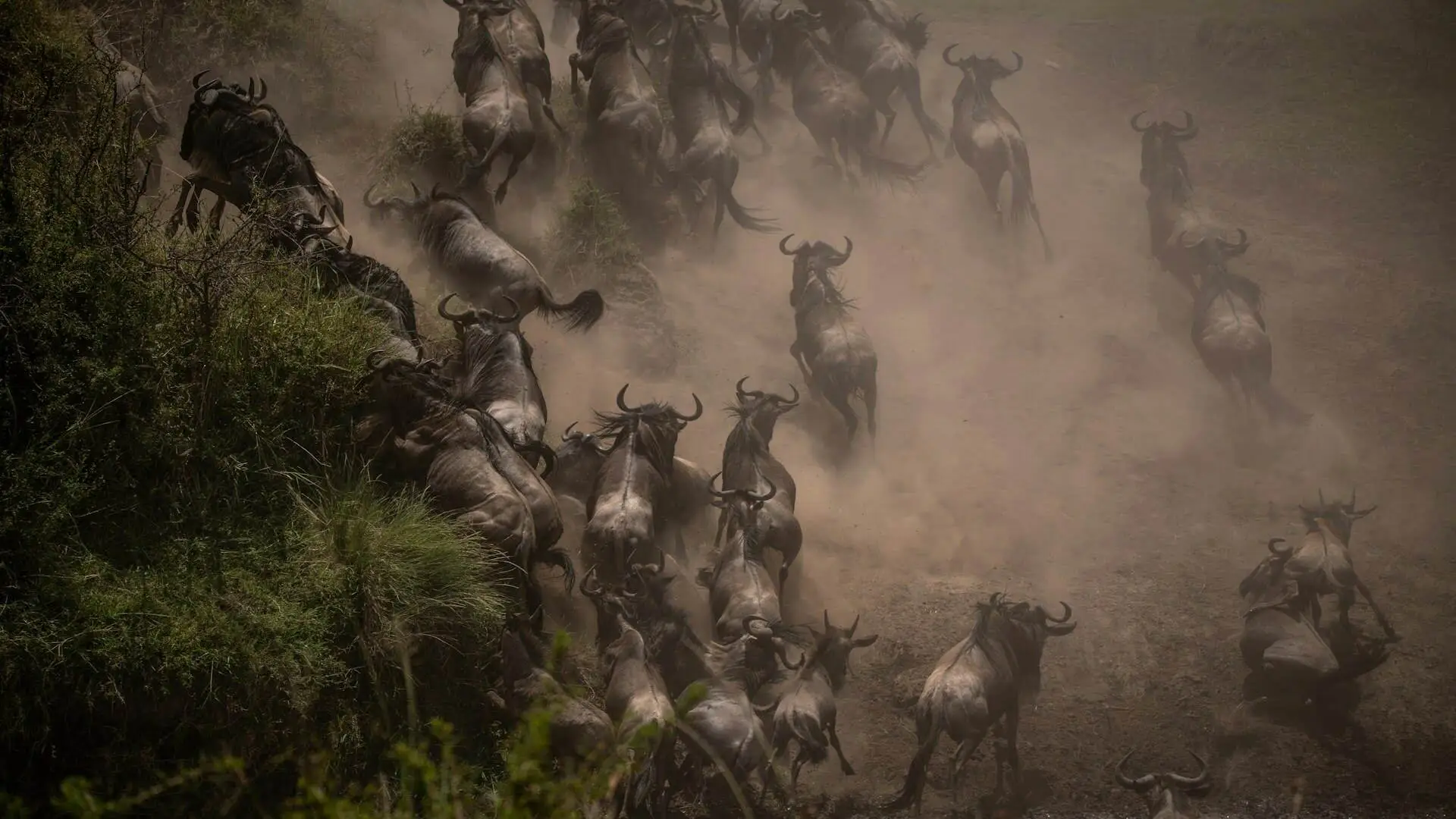
Importance of Wildebeests in Africa
Ecological Importance
Wildebeests are a keystone species in the African savanna. Their movement and grazing shape the landscape and benefit other species.
- Food Source: They are prey for lions, cheetahs, leopards, hyenas, and crocodiles.
- Seed Dispersers: As they graze and move, they help spread seeds of various plants.
- Ecosystem Engineers: Their constant grazing keeps grass short and prevents bush encroachment, supporting biodiversity.
- Dung Enrichment: Their waste enriches the soil, promoting plant growth and feeding insects and dung beetles.
Without wildebeests, many predator populations and ecosystems in the Serengeti would collapse.
Cultural Importance
Wildebeests are part of Africa’s cultural fabric. Many communities have hunted them traditionally for food and materials. They also appear in African folklore, stories, and art as symbols of freedom, strength, and survival.
Their dramatic migration is a major draw for eco-tourism, contributing to local economies in Kenya and Tanzania.
Historical Importance
Wildebeests have roamed Africa for millions of years. Fossil evidence shows their presence dating back to the Pleistocene epoch, about 2.5 million years ago. Their evolutionary success is closely tied to the development of the African savanna.
Unfortunately, human activity including fencing, agriculture, and climate change has limited their range and made some populations vulnerable.
While blue wildebeests are currently listed as Least Concern by the IUCN, black wildebeests were once nearly extinct in the wild. Their numbers have rebounded in South Africa.
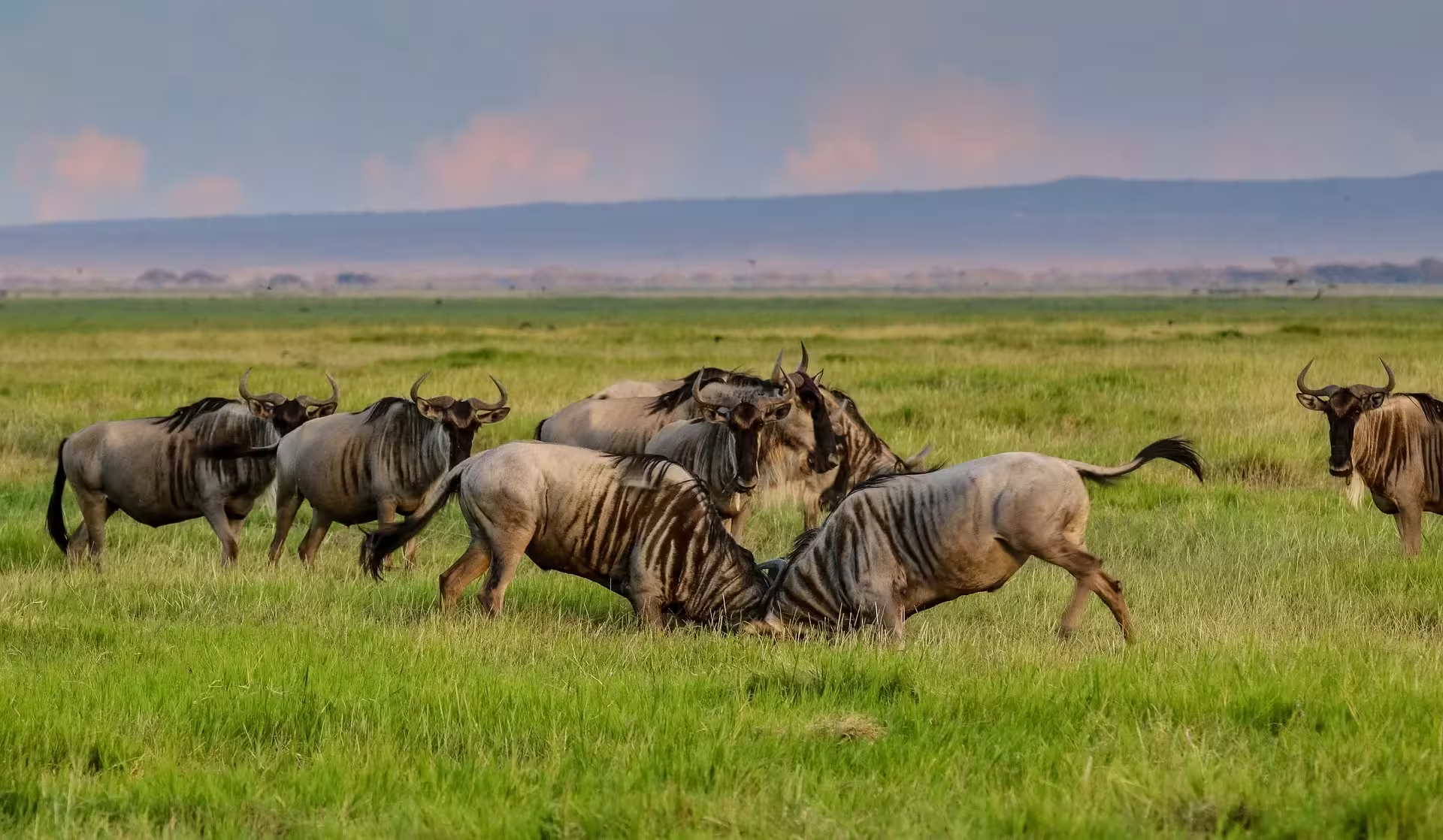
Interesting facts about Wildebeest
- Wildebeest can smell rain from far away and follow it to find fresh grass.
- Their herds can grow so big that they stretch across the horizon.
- Wildebeest calves are born during the same few weeks each year.
- They follow the same migration path every year without getting lost.
- Even though they look heavy, they can jump over rivers and run fast.
- They make loud, snorting sounds to warn each other of danger.
- Wildebeest have sharp horns used to fight and protect themselves.
- Their yearly migration is the largest land animal movement on Earth.
- They remember safe routes and good grazing spots.
- Wildebeest help the grasslands stay healthy by moving and grazing.

